The History Of Drones (Timeline From 1907 To 2024)
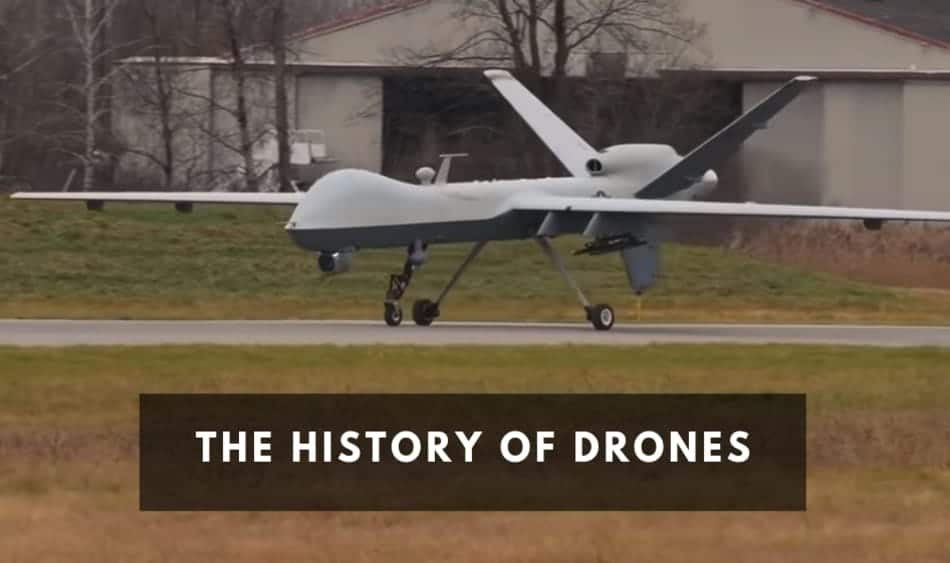
When drones actually hit the market? Some will tell you a drone is a surveillance tool meant to watch over a nation, others might say it’s an innovative gizmo for delivering products. Even more probably will tell you a drone is a lethal ghost hiding in the sky.
Would you believe the first unmanned aerial vehicle (Drone) was created almost 110 years ago? Drones or Unmanned Aerial Vehicles (UAVs) are aircrafts with no on-board crew or passengers. From the very beginnings these unmanned aircrafts (drones) were originally built for military purposes.
If we look today, we can see that drones have found wide range of applications for the civil use in the form of small quadcopters and octocopters. It’s no wonder these machines have captured the curiosity and fear of the world over, but where do these phantoms of the sky come from? To find out the answer to that question, we have to look back 100 years. I compiled you the complete History of Drones.
1907 – The First Quadcopter
The Brequet brothers were the first initiators of the quadcopter back in 1907. It was known as the Gyroplane No.1. The weight of the Gyroplane was 1274 lbs (577kg). This was the first rotary wing aircraft to lift itself off the ground, although only in tethered flight at an altitude of a few feet. It was reported that Gyroplane managed to flown ‘several times’. After it was made, it wasn’t quite clear how exactly the quadcopter would be controlled, but at least it would fly.
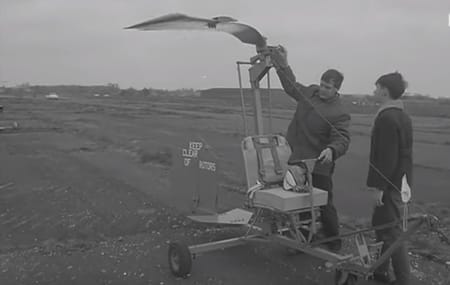
1915 – First Real Introduction of Aircrafts
World War 1 saw the first real introduction of aircrafts into military service though things like Balloons and Kites had been used for decades before. Toward the end of World War 1 the US army was working on what it called aerial torpedoes.
This was an aerial torpedo, on today terms this was a cruise missile. Small biplanes like the Kettering bug that would essentially work as kamikaze drones, but the war ended before they could be used.
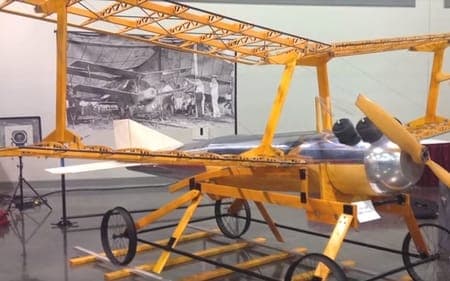
This Kettering Bug was capable of striking targets up to 120km. During the 1915 war, the British used “drone” shots where they had a set of 1000 celestial maps, thereby taking advantage of enemy territory.
This uttered in a brand new era using aerial imagery for complex coordinated operations like for the first time ever. Artillery on the ground were able to carry out Burridge’s with advenced knowledge of the enemy infantry thanks to aerial map.
1920 – First Stable Quadcopter
This kind of quadcopters were the first vertical take-off and landing vehicles. The first useful was Oehmichen No.2, invented in 1920 by Etienne Omnichen. For this quadcopter the first successful flight taken place in the year of 1921.
What Oehmichen No.2 managed back in 1920 was really stunning. He managed to make more than 1000 flights and could hover in the air for a few minutes, which at the time was bordering on the impossible, because mechanics was very complex and underdeveloped as a science.
If you are looking to buy a drone, we recommend this great model: DJI Phantom 4 Pro V2.0
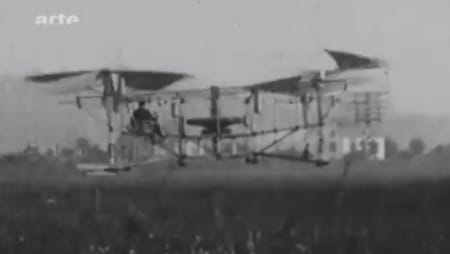
1939 – First Military Drones
This system continued to develop throughout the war. In 1939 in the very early stages of World War 2, the United States produced the first remote controlled aircraft called the “Radioplane OQ-2”. It was created by Reginald Denny.
Norma Jean Doherty before she became better known as Mailyn Monore worked at a California plant assembiling OQ-2’s during the war. During the Cold War the UAV’s continued to play a important role. Overall length was 8 feet, 8 inches with a wingspan of 12 feet, 3 inches and the weight of OQ-2 was 105lbs.
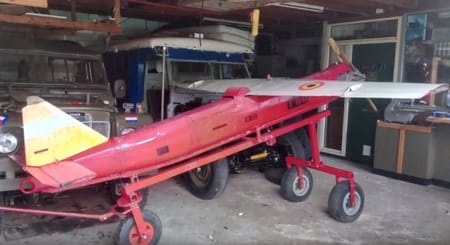
1956 – Convertawings Quadrotor
This unique quadrotor was the prototype for a larger civil quadrotor helicopters during the war. The first flights took place in March 1956. This quadrotor flown successfully many times in the mid 1950’s. This 4 rotors had the position “H”.
Because there was the lack of orders from military the project was terminated. The system was designed so that almost any combination of collective pitch changes could be introduced into the four rotors, thus varying the rotor thrust and yielding powerful control.
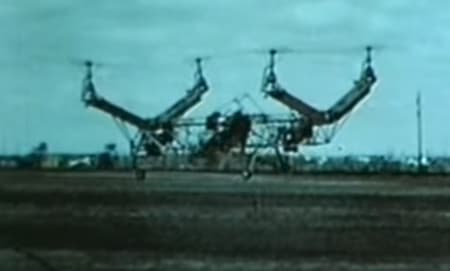
For example, to roll the Quadrotor to one side, the pitch of both rotors on that side would be increased while the pitch of the two rotors on the other side was decreased. Specifications of Convertawings Model A: the weight was 2200 lbs (997kg), length was 26′, rotor diameter was 19’4“ and top speed was 80mph.
1973 – First Israeli Military UAV (Mastiff)
This drone (Mastiff) with unique design was one of the most advanced UAVs in the first modern military age. It first flew in 1973. This Israeli unmanned aerial vehicle had advanced electronic equipment that enabled the transmission of high quality video.
This drone required a capacity to carry a 10kg payload at range of 50km. The Israeli military learned vital lessons regarding UAVs during the Yom Kippur War in 1973. In general in 1973 after the Yom Kippur War Israle developed the Mastiff UAV and soon after the IAI Scout Again both unpiloted surveillance machines.
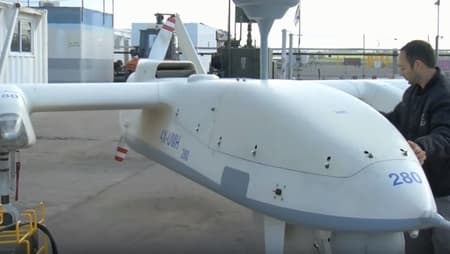
1986 – RQ2 Pioneer UAV
In 1986 a joint US-Israeli project produced the RQ2 Pioneer, a medium-sized reconnaissance drone. This Pioneer drone was the upgraded version of Tadiran Mastiff and was used in the US Navy. Launched by rocket assist (shipboard), by catapult, or from a runway, the Pioneer recovers into a net (shipboard) or with arresting gear after flying up to five hours with a 75-pound (34 kg) payload.
Around the same time Abraham Kerim an Israeli expert engineer who’d spent years working for the IAI developed a similar prototype called the “gnat 750” in his garage outside Los Angeles. Pioneer has operated in many theaters including the Persian Gulf, Bosnia, Yugoslavia and Somalia.
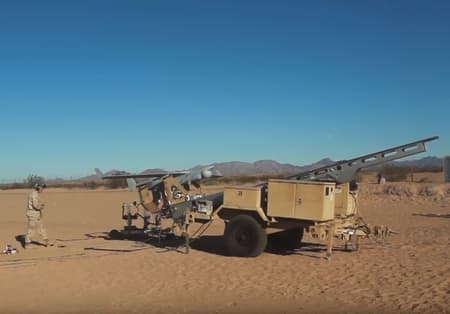
1994 – General Atomics MQ-1 Predator
This ultimate Atomics MQ-1 Predator is unique American remotely aircraft. On January 3th , 1994 the Pentagon signed the contract with General Atomics. They make a deal to make it bigger, sturdier, quieter more dynamic drones.
At the cost of about $ 40 milion per system the MQ-1 Predator is a price yet integreal part of U.S. air force operations in Irqa and Afghanistan. The predator operates remotely under the supervision of 3 in a force personnel.
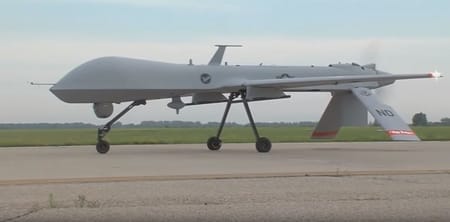
1 pilot and 2 sensor operators, though a full team complement consists of 55 personnel. The predator is controlled by a top-mounted camera, giving pilots a complete view of what is in front and below them and getting real-time information.
In terms of performance the MQ-1 can reach ceilings of up to 25,000 feet with a range of 454 miles at speeds of 135 mph. Wingspan for the unmanned craft measures in at nearly 49 feet and entire system unloaded weighs about 1,100 pounds.
Also, one of the popular models that is also very affordable is DJI Mavic 3 Drone.
2001 – First Armed Drone Strikes
The predator was first flown over Afghanistan in the fall of 2000 when an Air Force team flew one for the CIA in a hunt for Osama Bin Laden. At the time it was only armed with surveillance cameras.
On December 21, 2000, the US Air Force received Pentagon approval to arm the predator with Hellfire missiles. Less than a year before 9/11 terrorist attacks on New York city. In the immediate aftermath 9/11 the CIA launched the targeted killing campaign. Essentially an approval list from the Pentagon to kill whom ever they deemed perpetrators of the 9/11 attack.
This is legal because of because of what’s called an authorization for use of military force. Enter the strikes as the remnants of the terror group AI Qaeda’s leadership fled out of Afghanistan and into Pakistan and Yemen. Both sovereign territories. Shortly thereafter, much more modern and better equipped aircraft appeared, which had great capabilities, and things got messed up.
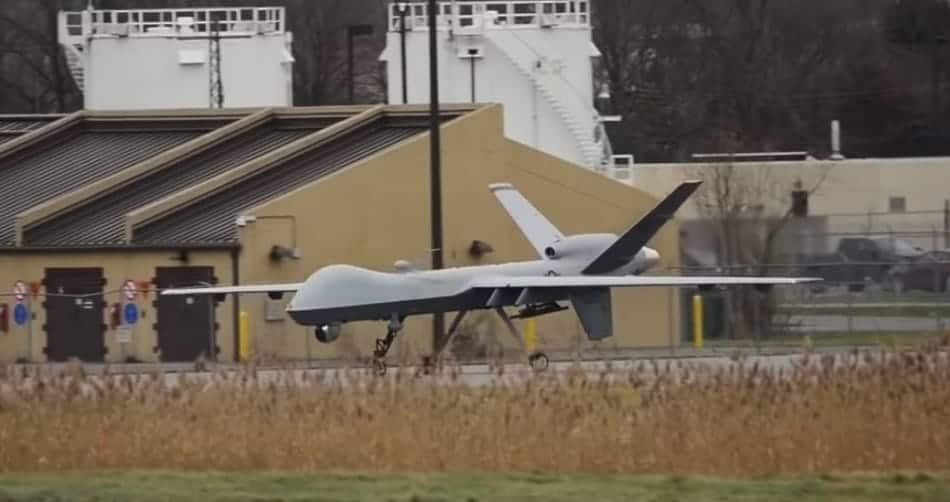
Article 2-4 of the charter of the United Nations protects the sovereignty of member states, meaning they should be free from military incursions during times of peace but the Obama administration argued the manhunts were permissible because the intended targets.
All affiliated with Al-qaeda in one form or another pose an imminent threat of attacks on US soil or US interests abroad. everyone was silent about it, nobody wanted to say what it was about, especially the Pentagon. The bureau of investigative journalism reports that the CIA initiated close to 400 drone strikes in Pakistan since 2004. The Bureau reports 957 civilians have been killed by drone strieks in Pakistan since 2004. The ethics and laws of it all are still largely a very gray area.
Related Article: The History Of Drones (History Timeline From 1483 to 2023)
2006 – First Commercial Drone Uses
What is officially recorded and confirmed is that it was not until 2006 that drones began to be used for commercial purposes. UAV’s are first used by corporations in 2006 to inspect pipelines and spray pesticides on farms.
How Drones Technology and Camera improved in the military sector, those same technological improvements could be used in the private sector. Also, on May 18, 2006, the Federal Aviation Administration (FAA) issued a certificate of authorization which will allow the M/RQ-1 and M/RQ-9 aircraft to be used within U.S. civilian airspace to search for survivors of disasters.
2010 – Introduction of Parrot AR. Drone
The parrot AR Drone, a smartphone-controlled quadcopter for consumers, is introduced at the Consumer Electronics Show in Las Vegas in 2010 and make a boom in consumer quadcopter industry. This drone (Parrot AR.) is a French company that manufacture flying quadcopters.
Parrot AR Drone can be controlled by a normal Android or iOS phone or any kind of tablet. At the time, the drones had problems with the batteries and their low capacity, and AR Parrot announced that it would try to solve the problem and provide users the longer flying time.
Since its initial release, individuals organizations, and governments have expressed concern over the use of AR.Drones for surveillance. Although the technology required to feed and record live video taken from unmanned aerial vehicles (UAVs) existed prior to the release of the AR.Drone, it was not widely available to members of the public.
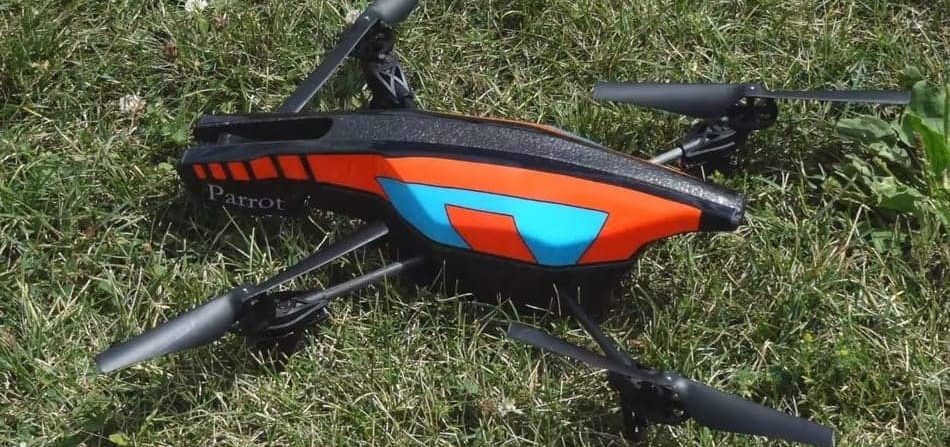
2013 – Domination of Commercial Drones by DJI
If you want to buy a new Samartphone, the first brands that comes to your mind are Apple or Samsung. What we can say about DJI is that they have managed to make total dominance in the drone world, and well deserved.
The famous DJI drones were founded in 2006 by the entrepreneur Frank Wang at Hong Kong University. DJI products are redefining industries and its products used in filmmaking, agriculture, conservation, search and rescue and may more. The range of products that they produce are: Unmanned aerial vehicle (UAV), the popular one is phantom series.
As of date, the company stands at $1.0 Billion revenues (2015) and a valuation of $10 Billion, with 4000 employees, operates divisions in China, Hong Kong, Japan, North America and Europe. What DJI has managed to do in the drone world, rarely has anyone done it in any industry. They made up a dominance of nearly 70% of the entire drone market.
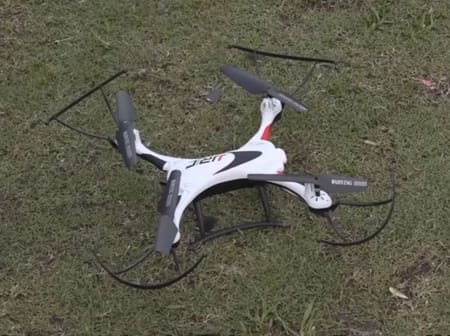
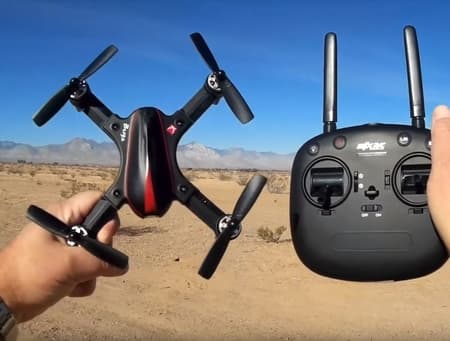
2014 – Amazon Drone Delivery
In 2014 Amazon proposed using drones. This drones are much smaller than those who used in military and have much more features. Quite a few agencies have been hired to use drones for their work, and some of the companies have started making their own drones.. Other have used drones for anti-poaching rescue missions in Africa. Medicine delivery via drones is still in its testing phase and even Facebook is building huge solar-powered drones to fly at 50,000 feet and beam internet into remote areas of the World.
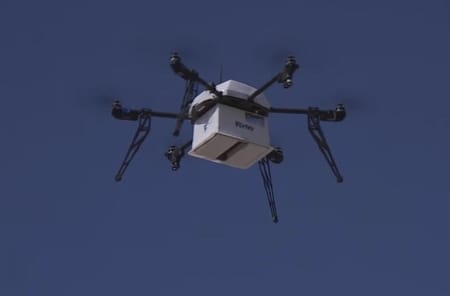
The Federal Aviation Administartion reports more than 934 government agencies in the United States from the FBI to customs and border control to small police departments in Minnesota have been approved for limited rights to operate unmanned aircraft in domestic spaces.
There’s been a blowback as of May 2014, 35 states in the US have introduced legislation to limit the use of drones by government agencies to date. 12 have adopted this legislation. Ironically the recent polls show that more than half of Americans approved the use of drone strikes overseas. If the drone age is indeed here, what we can expect in the next year two years, 5 ? If recent trends are any indication we might as well get used to seeing and having them see us.
2018 – World’s First passenger Drones
The first real and serious project to take a turn in this industry was in 2017, when the first passenger drone named Ehang 184 was unveiled. It is very first autonomous passenger drone which means that it is self-driving, and it does not require a parenting license to pilot it.
Ehang the maker of the Ghostdrone series has produced a manned version of a traditional drone UAV called the EHang 184 for the drone uses 8 electric motors to power 8 propellers which can carry one person weighing up to 100kg, which includes any personal luggage such as briefcases or handbag.
The great thing about passenger drones is that they can move you from one point to another much faster, and they don’t need any wider space than what a classic car needs (maybe just a little bit wider). It can cruise at speeds of up to 6 to 2 miles per hour and has a ceiling height of 11,000 ft (3352m) above sea level.
> Check this DJI Air 2S Fly More Combo <
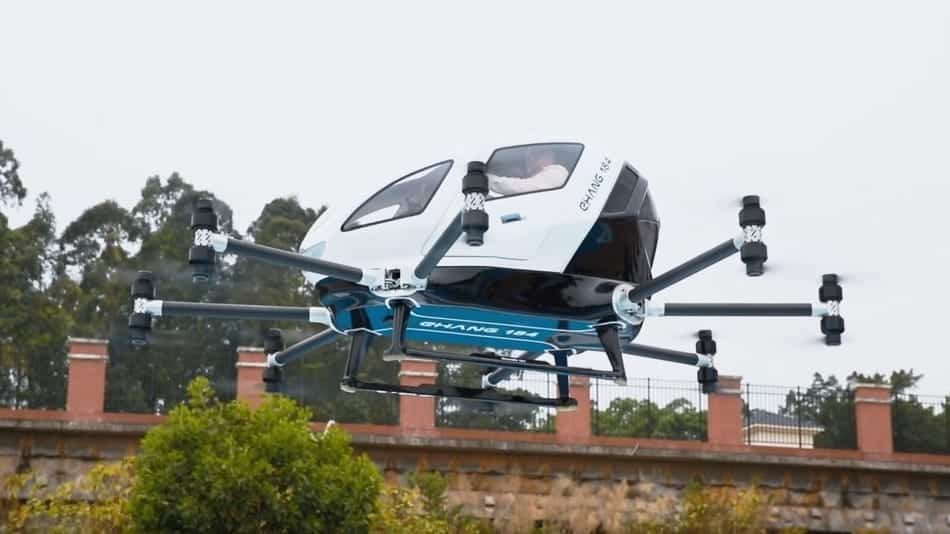
Conclusion
Now when you look at this all the way through the last 100 years, you can see that really great miracles have happened in the drone world. It took a very long time to have really reliable systems. World War 1 saw the first real introduction of aircraft into military service though things like Balloons and Kites had been used for decades before. And then in the mid 1930s aircrafts are flying higher and faster, shooting down really gets to be a very difficult challenge.
Ever since 1973, when the world saw the first military unmanned aerial vehicle, until today when this technology has gone impressively forward and the world uses new types of Predators, we can really be amazed at what lies ahead for the foreseeable future. Today, drones are used for business purposes, for entertainment and even for sports.
We may witness that drones also become a professional career-building sport. Uber plans up to 2020 to present drones as a means of transport. Therefore, we expect a very interesting and uncertain future, but it is a huge leap it’s going to need very significant advances and artificial intelligence, but we’re not really quite there yet.


